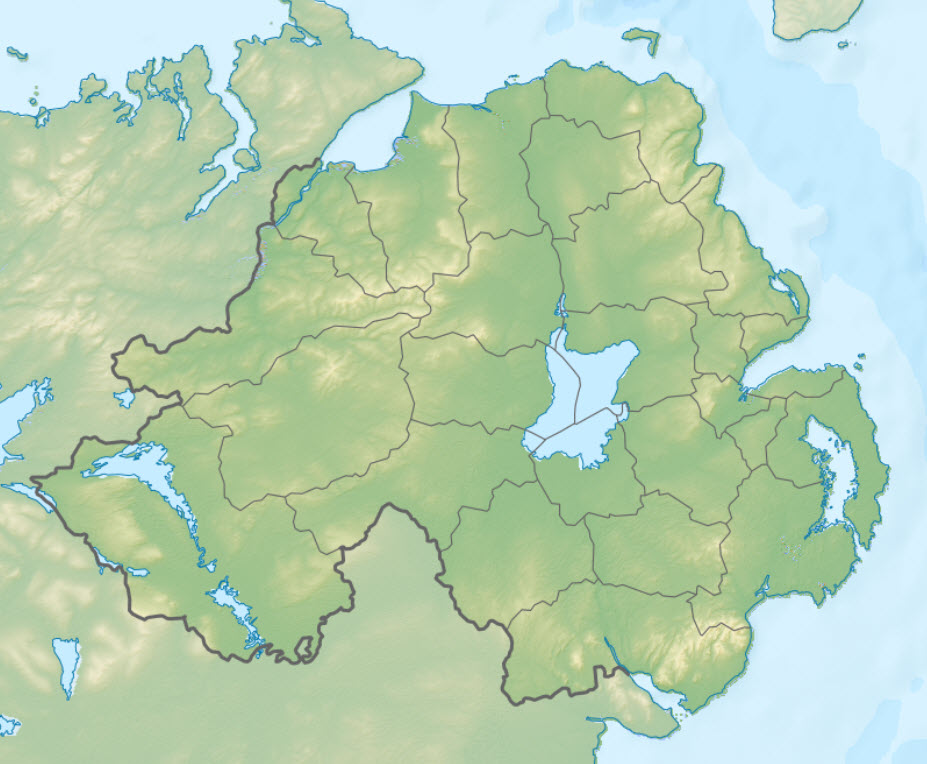Lough Neagh is the largest freshwater lake in the British Isles. Located in Northern Ireland, it spans approximately 151 square miles (391 square kilometers). It is an important habitat for wildlife but also a significant resource for human activity, a source of drinkning water for Northern Island and a focal point for local mythology and history.
Lough Neagh is a jewel in Northern Ireland’s landscape, offering rich biodiversity, vital resources, and recreational opportunities. Its vast waters and surrounding lands tell a story of natural beauty, human history, and ongoing conservation efforts.
The lake’s large catchment area is crucial for biodiversity, supporting a variety of plant and animal species, some of which are unique to the region. The lake plays a pivotal role in water supply, agriculture, and flood management for Northern Ireland. The lake bed is owned by the 12th Earl of Shaftesbury, and the lake is managed by Lough Neagh Partnership.
As a site of ecological importance and cultural heritage, Lough Neagh remains a cherished part of the British Isles, deserving of both appreciation and protection for future generations.
Name
The Irish name of the lake is Loch nEachach, which means Eachaidh’s lake. The name Lough Neah is derived from this name.
Water supply for Northern Ireland
Lough Neah supplies over 40% of Northern Ireland´s drinking water.
Geography

Inflow and outflow
The main inflows for the lake is the Upper River Bann and Blackwater, while the main outflow is the Lower River Bann. Through the Lower River Bann, it drains into the North Channel.
Islands in the lake
- Coney Island
- Croaghan Island
- Derrywarragh Island
- Gartree Point
- Padian
- Ram’s Island
- Tolans Flat
Peninsulas
- Kinnegoe (peninsula)
- Kinturk (peninsula)
- Oxford Island (peninsula)
- Traad (peninsula)
Wildlife and Conservation
The lough is a haven for wildlife, particularly birds. It is designated as a Special Protection Area (SPA) under the European Union’s Birds Directive because of its importance for overwintering waterfowl. Species such as the whooper swan, tufted duck, and pochard find refuge in its waters during the winter months. The surrounding wetlands and shores also support diverse plant life and are critical breeding grounds for many fish species, including eels, which are of both ecological and commercial importance.
The lake’s ecosystem faces challenges from pollution, invasive species, and habitat degradation. Various conservation efforts are underway to protect and restore the lough’s natural environment. These include initiatives to improve water quality, manage fish stocks sustainably, and conserve wetland habitats. Collaboration among government agencies, environmental organizations, and local communities is key to the ongoing stewardship of Lough Neagh.
Fish in Lough Neagh
Examples of fish species present Lough Neagh are European eel, salmon, trout, dollaghan (a variety of brown trout), pollan, gudgeon, rudd, and pike.
The lough is famous for its European eels and eel fishing has been a major commercial enterprise here for centuries. The European eel will travel with the Gulf Stream from the Sargasso Sea to European waters, a journey that can be over 4,000 miles (6,000 km) long. Some of the eels will make their way to the mouth of the River Bann, and then travel upstream to Lough Neagh. They will live and grow in the lough for 10-15 years, and when they reach maturity they will return to the Sargasso Sea to spawn.
As mentioned above, the Lough Neagh Eel has Protected Geographical Status under European Union Law.
History and Culture
Lough Neagh has been central to human settlement and activity for thousands of years. It has served as a source of food, transportation, and inspiration throughout history. The lough’s eels are especially renowned, with a fishing tradition that dates back centuries. Today, the Lough Neagh Eel has been granted Protected Geographical Indication (PGI) status by the European Union.
The area around Lough Neagh is steeped in mythology and history. According to legend, the lake was formed when Ireland’s giant, Fionn mac Cumhaill, scooped up a chunk of earth and tossed it at a rival, creating the Isle of Man and leaving behind the depression that filled with water to become Lough Neagh.
Recreation and Tourism
Lough Neagh attracts visitors for a variety of recreational activities. Boating, fishing, and bird watching are popular, as are walking and cycling around its picturesque shores. Birdwatchers do not only visit the lake; they are also enthralled by the boglands around the lough.
The lough is dotted with marinas, and its beaches offer leisure opportunities for families and outdoor enthusiasts. Several visitor centers around the lough provide information about its natural, cultural, and historical aspects, enhancing the experience for tourists.
Examples of nearby towns and villages that can serve as a base for visiting Lough Neagh are Antrim, Ardboe, Ballyronan, Ballinderry, Brockagh, Craigavon, Crumlin, Randalstown, Toomebridge, Lurgan, Maghery, Moortown, and Magherafelt.